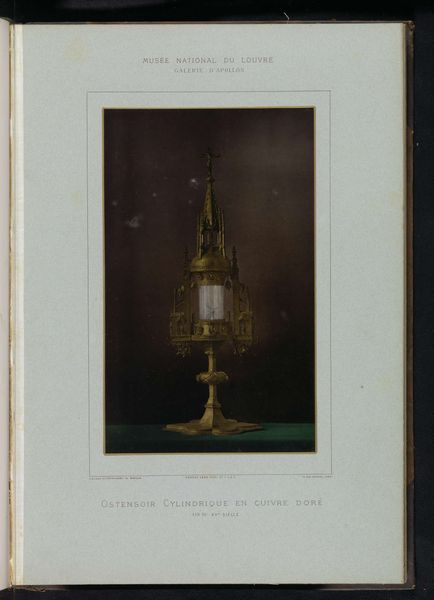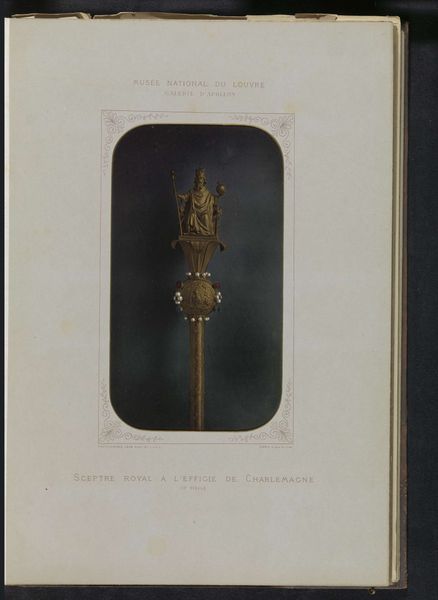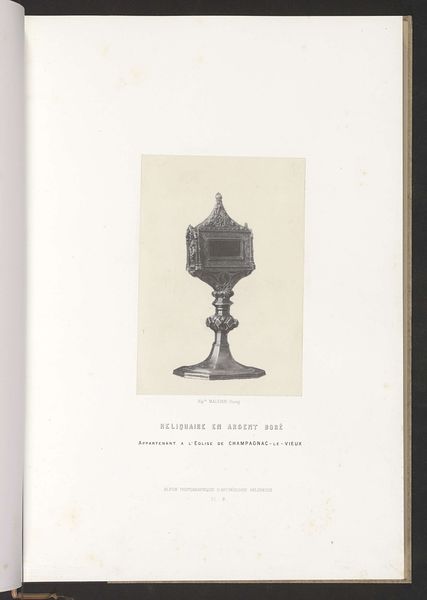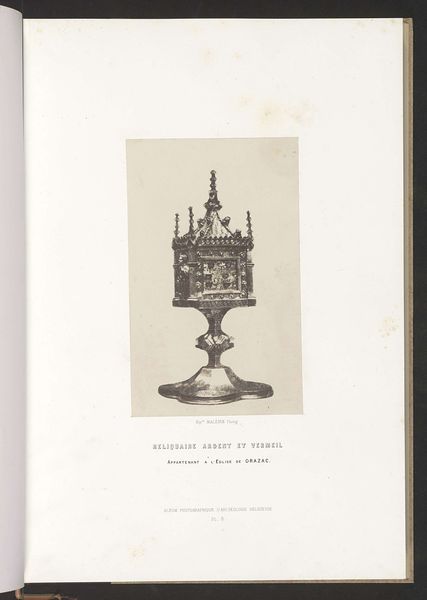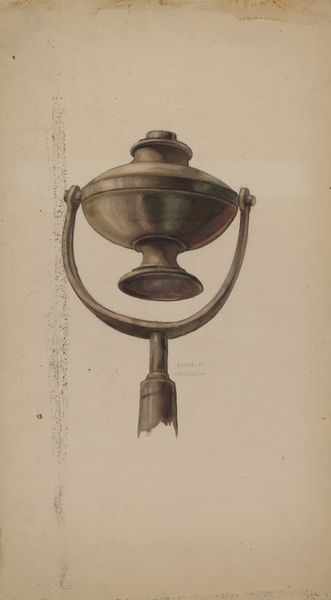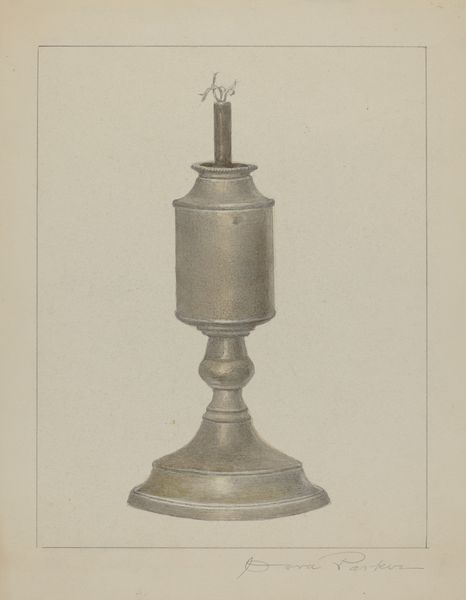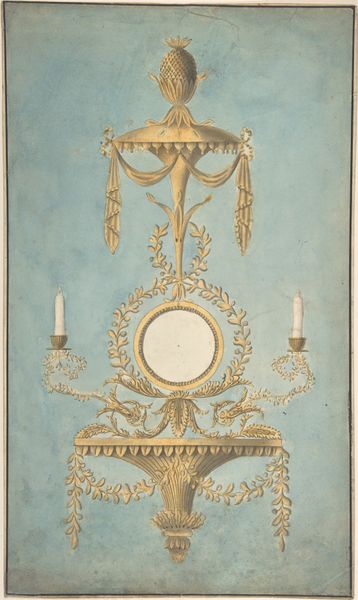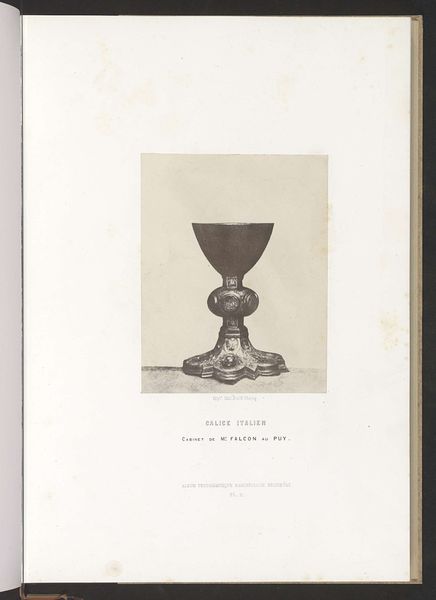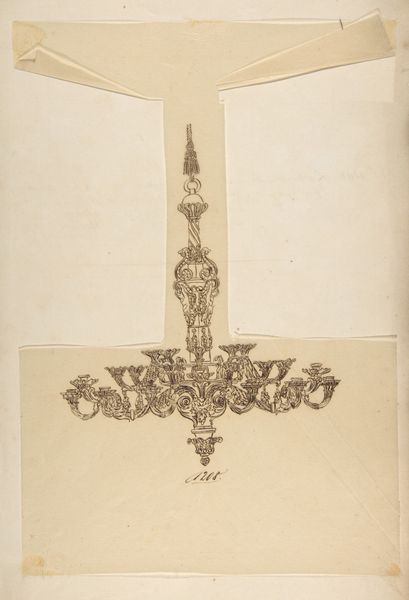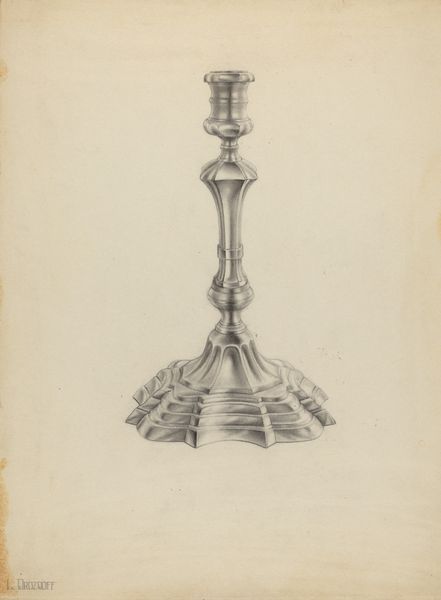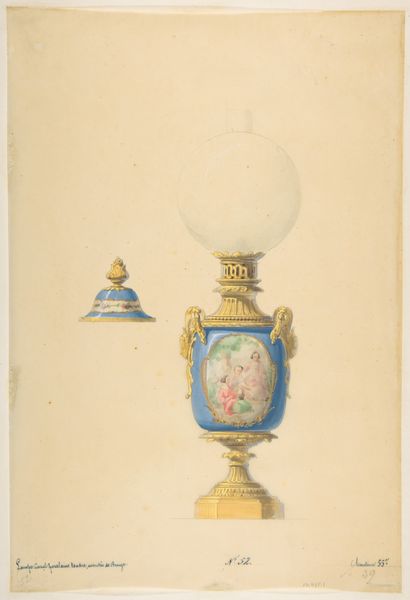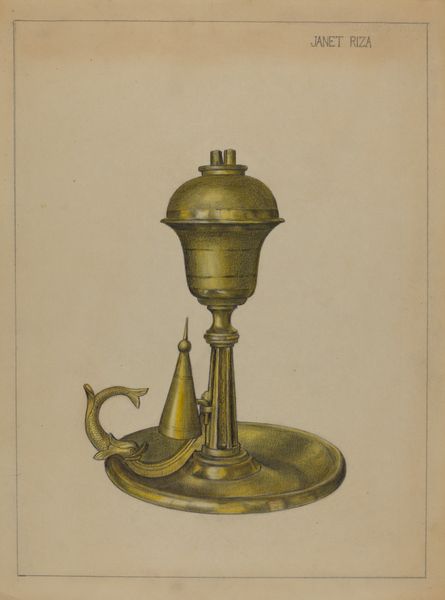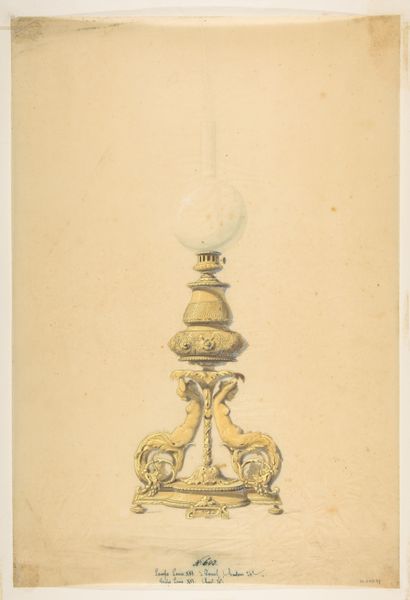
photography
#
photography
Dimensions: height 324 mm, width 176 mm
Copyright: Rijks Museum: Open Domain
Curator: Good morning. We're looking at an image titled "Brander voor op een altaar," which translates to "Brazier for an Altar," created by Léon Vidal. It’s a photograph dating back to the late 1870s or early 1880s. Editor: It's remarkable how this single object is set against a completely dark background. I can't help but sense a profound somberness; is this perhaps commentary on ritual or ceremony of the time? Curator: More specifically, Vidal's technical mastery is what arrests me here. Note the delicate gradations of light across the metal and glass—an absolute marvel, given the photographic processes of the period. Vidal expertly utilizes the refractive qualities of both materials. Editor: I agree that the details are immaculate. However, given that Vidal made photographs as a colonial military officer, I’m struck by how this precious object relates to France’s socio-political environment during the early Third Republic. Where did it function within the spectacle of French imperial power and how? Was the "Brander" itself a kind of technology—both literally as well as socially, considering its impact on perception, ideology, and subject formation during an era defined by intense political and social debates? Curator: An insightful consideration. Yet one cannot discount the inherent allure residing within the form itself. Note its careful geometry. The tripartite division leading the eye upward along a vertical axis speaks volumes regarding concepts of hierarchy, power, and even divine presence. Consider the subtle curves offsetting harsher angular edges. These offer a softened counterpoint within this intricate play. Editor: Right, and let’s think about the intended viewers, particularly members of the bourgeoisie—to consider these images only aesthetically overlooks important insights regarding empire and the objectification and representation of colonial difference. Moreover, thinking about photography during France's republican era offers insight regarding debates about citizenship, community, and nationhood that continue to resonate. Curator: Your observations remind us to contextualize aesthetic qualities of the object by attending to societal relations around it. However, let us not fail to honor Vidal’s photographic expertise! Editor: Agreed. Together, the social questions surrounding this "Brander," as well as the aesthetic qualities, give much food for thought and conversation.
Comments
No comments
Be the first to comment and join the conversation on the ultimate creative platform.
